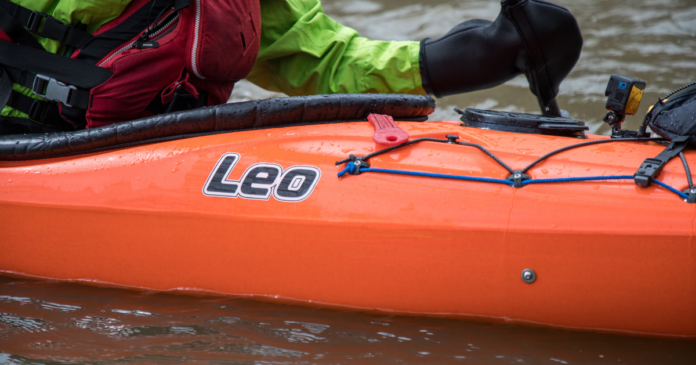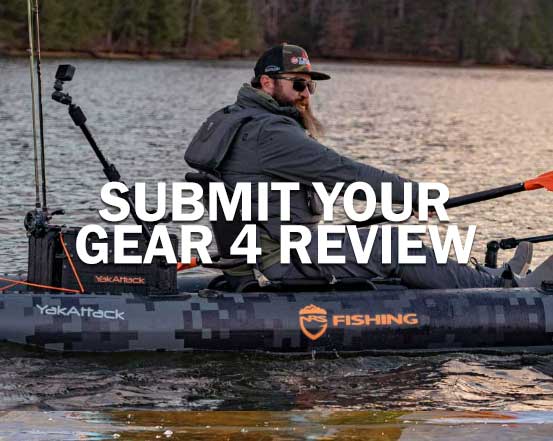Welcome my paddling padawans! Today I'm going to be reviewing a high-performance touring kayak, the P&H Sea Kayaks Leo. I'll tell you all about my experiences on the New River in North Carolina, where I took this bad boy down some Class 1 rapids as part of an overnight paddling trip. That's right folks, sea kayaks are meant for a wealth of exciting conditions, which is why I prefer to call them touring kayaks – “sea kayaks” doesn't quite do them justice.
This model is 2-feet longer than the P&H Virgo, which I got to test out last year, and absolutely loved. When I first got my hands on the Leo, I was curious how it would compare/contrast because of the extra length and compensating rocker. So who is this kayak for, and is it worth the hefty price tag? Let's get into it.
ABOUT THE P&H SEA KAYAKS LEO
Here's what P&H has to say about the Leo (slightly paraphrased):
This is a versatile, cruising sea kayak with superb stability, ample gear storage, and an extremely comfortable cockpit with plenty of room to stretch your legs as you take on longer journeys or travel between play spots along a coastline.
The P&H Leo comes in two sizes: the Leo HV (High-Volume), for larger paddlers, and the Leo MV (Mid-Volume), for average-sized paddlers. Given that I'm 6′ 2″/195 pounds, I opted for the HV. Here are the specs:
Retail Price: $2,599 (USD)
Length: 16′
Width: 23″
Volume: 87 GAL (333 L)
Weight: 60 LBS (27 KG)
Max Capacity: 245 LBS (124 KG)
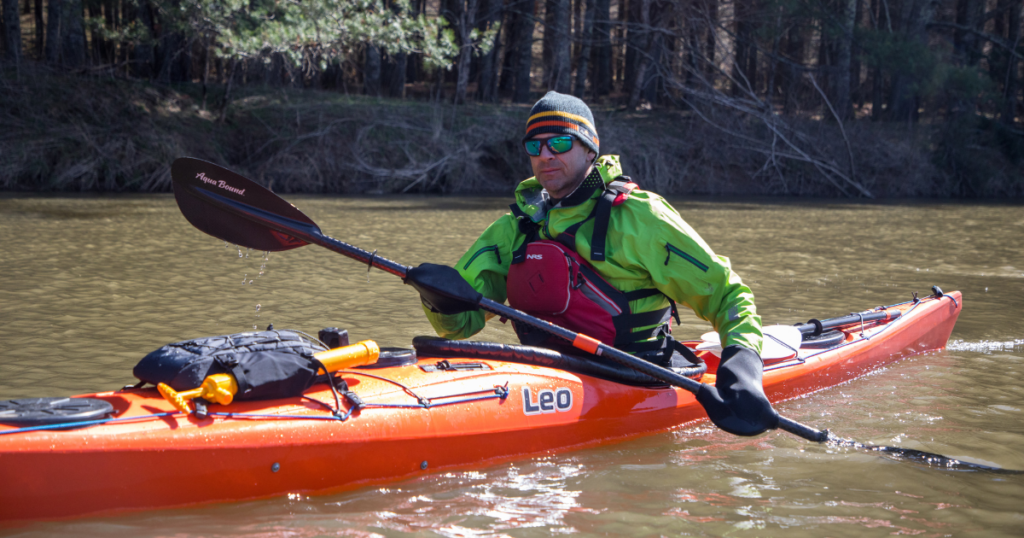
The Leo has grab handles at each end, and full deck-bungees on both the bow and stern. It comes standard with three hatches (one at the bow and two in the stern), with the option for a fourth (a day-hatch), just in front of the cockpit. It also comes with a drop-skeg, or with an optional “skudder,” which is a skeg that actually works like a rudder. In the cockpit, there are adjustable footpegs, thigh-hooks, hip-pads, a contour/padded seat, and a back-band.
Is the P&H Leo kayak heavy?
The Leo is 16-feet-long and 60 pounds. This means that portability is not its primary selling-feature. A strong person will be able to lug this boat around on their own, but I think most people should consider bribing a friend to help get it to your vehicle/the water. Those set on their independence could also invest in a kayak cart to help save their strength for the paddling.
Is the P&H Leo kayak stable?
P&H says that the Leo has excellent primary and secondary stability (i.e. how the kayak feels when sitting flat versus on edge). I completely agree! I was able to relax when simply cruising along, and when I was carving, dealing with tougher waves, and otherwise digging into high-performance paddling, I felt very secure on those edges.
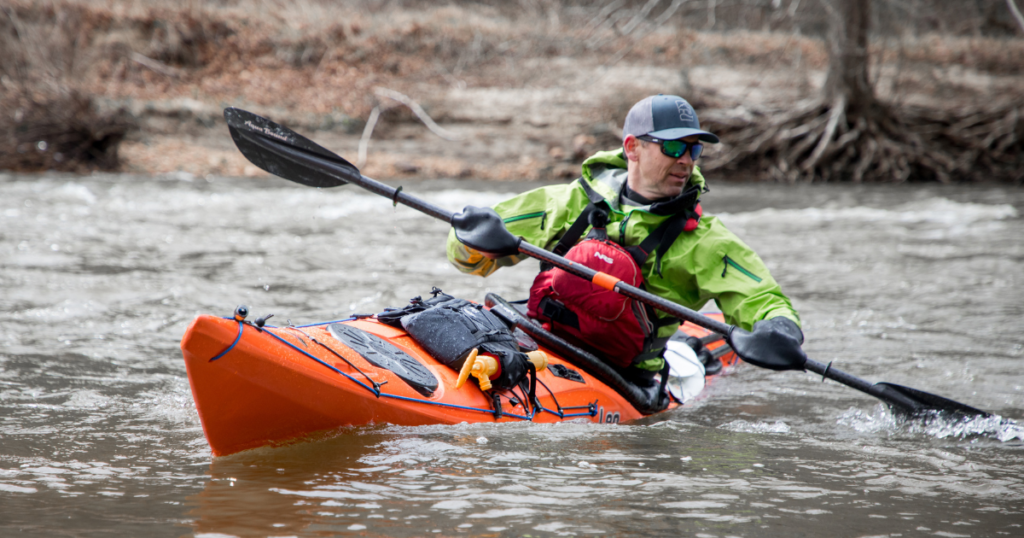
P&H Leo kayak performance
The long, narrow design of the Leo makes it quite speedy. It's not the fastest kayak in town, but that's because they put a rocker in it to make it more maneuverable. This plays into the advertised versatility of this boat. The well-rounded approach makes it appropriate for almost any adventure, rather than just covering long distances in the most efficient way possible. On top of its speed and ability to turn, the Leo also has high-quality outfitting that further enhances its performance. For example, the foot braces and reinforced thigh-hooks give excellent purchase, which helps improve power output. The contoured seat, and cockpit in general, also gave me a great sense of control while I was navigating the rougher spots.
P&H Leo kayak features
The feature I'll boast loudest about is the skeg system. This also stood out to me when I tested the P&H Virgo. I love that there's a simple dial, right in front of the cockpit, to both raise and lower the skeg. I haven't tried their “skudder” option yet, but I appreciate that they have the different customizable designs.
There's a bit of a trade-off when it comes to the hatches. On the one hand, the rubber seals are excellent for waterproofing (something I thoroughly tested in the white water). On the other hand, they can be difficult to put back on. So just make sure you take the time to do it right. I thought the day-hatch was a fabulous addition, clutch for those little, moment-to-moment items like sunscreen, bug spray, water/snacks, first-aid, etc. That being said, I also felt like the two back hatches were a little redundant. Rather than have two smaller chambers, I would have liked it if they ditched a bulk-head and just made a single large one. But that's just my preference. Some may like the organization that comes from extra compartmentalization.
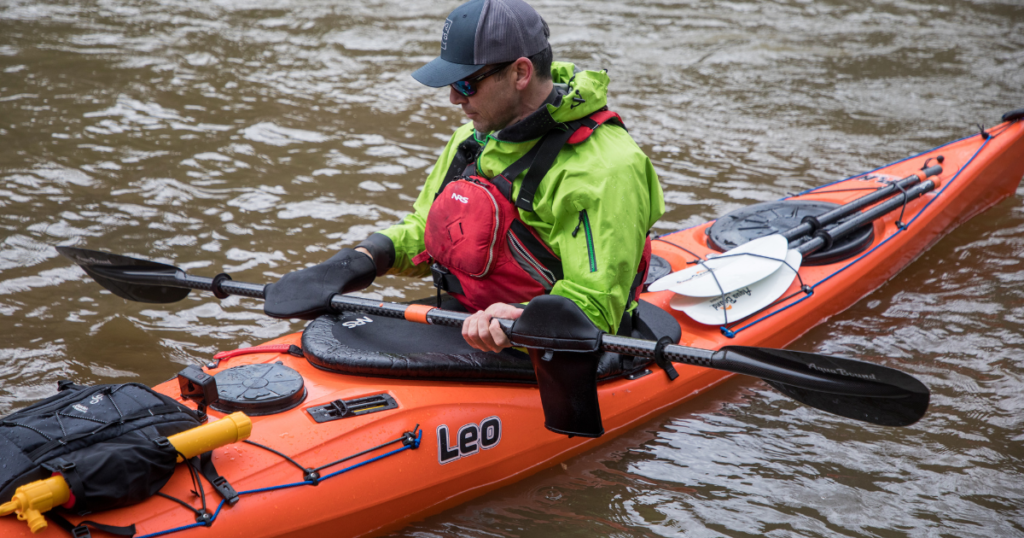
Is the P&H Leo kayak comfortable?
These days I tend to prioritize comfort, even if that means sacrificing a smidge of performance. In this case, the Leo gave me what I wanted in both departments. Much of my comfort was owed to the high-volume offering that gave me the space I needed as a larger paddler. The footpegs were so generous, that even at 6′ 2″, I still had enough room in front of them to store a dry bag. The height of the deck was also in that goldilocks zone. I had plenty of room for my knees, and it wasn't so high that I felt like I was sitting in a bathtub, awkwardly trying to navigate (as can sometimes be the case in high-volume models). The thigh-hooks, seat, hip-pads, and back-band were nothing to write home about, individually, but collectively, they made for a smooth ride.
Is the P&H Leo kayak worth it?
At $2,599 (USD), the Leo is not a cheap kayak. But that's what you should expect to pay for a high-performance model that you'll likely have for the rest of your life (if you want to). Plus, this boat's versatility means you can take it in all sorts of conditions. For example, this is pegged as a sea kayak, and yet I had a blast on my 2-day river trip. I'd be excited to take this along the ocean shore, pop it in a lake, revisit the rapids, you name it. The P&H Leo is well-suited to advanced paddlers, but also stable enough for confident beginners, and anyone in between. Yes, it is priced on the higher-end of the performance class, but this is well-justified, and still within reasonable expectations.
One Final Note:
I wanted to give a quick mention to the American Canoe Association's free online paddling course. I know these things can be tempting to bypass, but I highly recommend you take the time to check it out. Paddling is generally safe and enjoyable, but when things do go wrong, they can escalate quickly. Often, a bit of key information can make the difference between an inconvenience and a disaster. And did I mention it was free? If you're reading this blog then that means you're probably already at your computer, so go ahead and click this link to find out more.
That's all I've got for you today. If you want to follow along with my North Carolina road/paddling trip, or for more tips, reviews, and adventures, check out PaddleTV.
Other paddling gear I use and recommend
NOTE: These are affiliate links where I’ll earn a small commission if you make a purchase at no additional cost to you, but it’s a great way to show your support. Thanks!
FOOTWEAR
PADDLING SHIRTS / TOPS
NRS H2Core Silkweight Long Sleeve Shirt
NRS Hydroskin Short Sleeve Shirt



